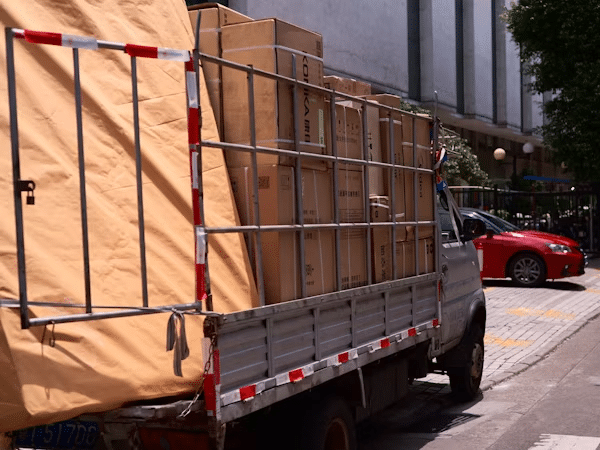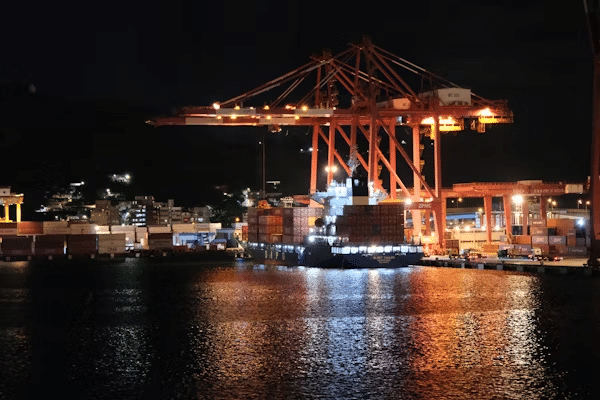Moving to a new place ranks among life’s most stressful experiences, sitting right up there with changing careers or planning a wedding. Whether you’re crossing oceans to start fresh in a new country or simply shifting between states, the logistics involved can feel overwhelming. But here’s the thing—with the right preparation and knowledge, what seems like a mountain of chaos can transform into a manageable, even exciting journey.
International relocations continue to attract skilled professionals, students, and families seeking new opportunities in different countries. At the same time, domestic relocations remain incredibly common, with thousands of people moving between states each year for work, lifestyle changes, or family reasons. Both scenarios come with their unique challenges, paperwork, and considerations that deserve attention well before you start packing boxes.
The difference between a smooth relocation and a nightmare scenario often comes down to understanding what you’re dealing with. International moves bring the added complexity of customs regulations, import restrictions, and international shipping logistics. Domestic interstate moves, while seemingly simpler, have their own set of challenges including transport coordination, timing issues, and ensuring your belongings arrive intact across vast distances. This guide breaks down everything you need to know about both types of relocations, helping you avoid common pitfalls and make informed decisions about your move.
Understanding International Relocation
Making the leap to relocate internationally requires courage and considerable planning. When moving overseas, virtually everything you want to bring needs to travel across vast ocean distances, whether by air or sea freight. The timeline alone demands respect—sea freight can take anywhere from four to twelve weeks depending on your origin and destination, while air freight, though faster, comes with significantly higher costs.
Before you even think about packing, you need to make critical decisions about what’s worth bringing. Many people fall into the trap of shipping everything they own, only to realize later that replacement costs in their new country might have been lower than shipping expenses. Furniture, for instance, often doesn’t justify the shipping cost unless it holds significant sentimental or monetary value. Electronics present another consideration—different countries operate on different voltage systems and plug types, meaning your appliances might need converters or may not be practical to bring at all.
The paperwork involved in international moves can feel like learning a new language. You’ll need detailed inventories of your belongings, proof of ownership for valuable items, and a clear understanding of what you can and cannot import. Many countries have strict biosecurity laws designed to protect their ecosystems from foreign pests, diseases, and contaminants. This means items like wooden furniture, camping equipment, sports gear, and anything that’s been in contact with soil or animals requires special attention and often fumigation or treatment certificates.
One aspect that catches many international movers off-guard is the concept of prohibited and restricted goods. Most countries maintain comprehensive lists of items that either cannot be imported at all or require special permits and declarations. Weapons, certain medications, animal products, and even some types of seeds fall into restricted categories. What seems innocent in your home country might be considered a biosecurity risk in your destination. Fresh food products, soil, and biological materials face particularly strict scrutiny. Missing these details can result in items being seized, destroyed, or significant delays and fines.
The financial side of international relocation extends beyond just shipping costs. You need to factor in insurance for your goods in transit, potential storage fees if there are delays, and the costs associated with meeting regulatory requirements. Many items require professional cleaning or treatment before they can clear customs, adding another line item to your budget. Currency exchange rates also play a role—the cost you quote today might differ from what you ultimately pay weeks or months later when the actual transactions occur.
Then there’s the question of timing. International moves rarely align perfectly with your schedule. The gap between when your belongings ship and when they arrive at your destination can stretch from weeks to months. Most people relocating internationally need to plan for a period where they’ll live without their possessions, making strategic packing decisions about what to carry personally, what to ship, and what to replace upon arrival. This interim period requires thought—you’ll need enough clothing, essential documents, and personal items to sustain you until the rest of your life catches up.
Working with experienced professionals who understand international import regulations becomes invaluable in this process. Professional customs clearance services streamline the complex documentation and regulatory requirements, helping ensure your belongings move through the import process efficiently. These services handle the bureaucratic heavy lifting, from completing customs declarations to communicating with border authorities on your behalf. They understand the nuances of biosecurity requirements and can advise you on treatment options for items that might not meet standard import criteria. Having experts who can anticipate potential issues before they become problems provides peace of mind during an already stressful transition.

Climate Considerations and What They Mean for Your Belongings
Climate variations between your origin and destination can dramatically affect what you should bring and how you should protect it during transit. Moving from a temperate region to a tropical one, or vice versa, means items that survive perfectly well in your current home might not fare well in your new environment.
Wooden furniture, for example, can warp or crack when exposed to different humidity levels. Leather goods might require different care routines. Even your wardrobe needs reconsideration—that extensive collection of heavy winter coats might see little use in warmer climates, while your light summer clothing won’t cut it during winter in cooler regions. Electronics and appliances also respond differently to various climate conditions, with moisture being a particular enemy in tropical regions.
Books, documents, and other paper goods deserve special attention when moving to humid climates. Mold and mildew can quickly destroy items that aren’t properly stored or protected. Many people discover too late that their precious photo albums or important documents needed moisture-resistant storage solutions. Preventive measures during packing—like using moisture absorbers and ensuring items are completely dry before packing—can save heartache later.
Relocating Interstate: The Domestic Distance Challenge
While moving within the same country eliminates customs and import concerns, interstate relocations present their own unique set of challenges. The distances involved in many countries can be genuinely massive—crossing from one side of a continent to the other can cover thousands of kilometers. Even moves between neighboring states can span well over 1,000 kilometers. These distances mean that DIY moves often prove impractical, and professional services become necessary rather than optional.
The timing of interstate moves requires strategic planning. Peak moving season typically runs during summer, coinciding with school holidays and the traditional time for job transitions. This seasonal demand means higher costs, limited availability, and potentially longer wait times for moving services. Planning your move during off-peak periods—typically mid-autumn through early spring—can result in significant savings and more flexible scheduling options.

Weather conditions play a more significant role in interstate moves than many people anticipate. Summer heat waves can damage temperature-sensitive items during transport. Storm seasons in various regions can potentially cause delays. Winter weather in some areas can disrupt road transport routes. Professional movers account for these factors in their planning, but you need awareness of these potential complications when setting your moving timeline.
The logistics of coordinating an interstate move extend beyond just getting your belongings from point A to point B. You need to consider how long the transit will take, whether you need storage at either end, and how you’ll manage the gap between leaving your old home and accessing your new one. Many interstate moves involve temporary accommodation at one or both ends, adding complexity to your planning and additional costs to your budget.
Vehicle transportation presents another consideration for interstate movers. Driving your own vehicle across vast distances might seem straightforward, but long journeys make it a multi-day commitment requiring accommodation stops, fuel costs, and potentially vehicle wear and tear. Alternatively, professional vehicle transport services can ship your car while you fly, though this option comes with its own costs and timing considerations. The choice depends on your budget, timeline, and whether you’re ready for a long-distance road trip.
Insurance coverage deserves careful attention for interstate moves. While professional movers carry insurance, understanding what’s covered and what’s not can prevent nasty surprises. High-value items might need additional coverage. Sentimental items with limited monetary value but enormous personal worth might not receive adequate compensation under standard policies. Taking inventory photos before packing and clearly documenting the condition of valuable items protects you if damage occurs.
Professional interstate moving throughout Australia requires expertise in route planning, secure packing for long-distance transport, and understanding the regulations that vary between states. Experienced interstate removalists know which routes prove most reliable, how to pack items to survive extended transport times, and how to handle the coordination between pickup and delivery across different jurisdictions. They can advise on optimal timing, help you understand cost structures, and provide realistic timeframes based on your specific route. Their experience with unique geographic challenges means they can anticipate and plan for potential issues that might not occur to someone planning their first interstate move.

The Hidden Costs of Relocation
Both international and interstate moves come with costs beyond the obvious transportation fees. These hidden expenses can significantly impact your budget if you’re not prepared. Temporary accommodation often becomes necessary, whether you’re waiting for your international shipment to clear customs or need somewhere to stay while your interstate transport completes its journey. Hotels, short-term rentals, or even storage fees for items you can’t immediately move into your new space all add up.
Cleaning costs hit both ends of a move. You’ll likely need to ensure your previous residence meets inspection standards, potentially requiring professional cleaning services. Your new place might also need attention before you move in. These costs multiply for international moves where you might be paying for cleaning services in two different countries with different pricing structures.
Connection and disconnection fees for utilities, internet, and other services rarely cross people’s minds until they’re facing the bills. Setting up new accounts, transferring services, and paying final bills for your previous residence all contribute to your moving expenses. Some services require deposits or have minimum contract periods that can catch you off-guard financially.
Replacing items that don’t make the journey—whether by choice or necessity—represents another significant expense. That old couch that wouldn’t survive the trip, appliances that don’t suit your new location, or items that got damaged during transport all need replacement. Many people underestimate this category, assuming they’ll gradually replace things over time, only to discover that certain items need immediate replacement for daily living.
Making Your Relocation Decision
The choice between DIY and professional moving services involves more than just comparing quotes. Time, stress levels, and the risk of damage all factor into the equation. Professional services cost more upfront but include expertise, insurance, and proper equipment. DIY moves might seem budget-friendly initially but can become expensive when you factor in truck rental, fuel, potential helper costs, insurance, and the value of your own time and energy.
Start your planning early—three to six months before your intended move date gives you time to research, compare options, and secure bookings during your preferred timeframe. Rushing increases stress, limits your options, and often results in paying premium prices for last-minute services.
Create a detailed inventory of everything you plan to move. This serves multiple purposes: helping you decide what’s worth relocating, providing documentation for insurance purposes, and giving movers accurate information for quotes. Photographs of valuable items document their pre-move condition, providing protection if damage occurs.
Settling Into Your New Location
The work doesn’t end when your belongings arrive. Unpacking strategically—starting with essentials and gradually working through less critical items—prevents the overwhelming feeling of being surrounded by boxes indefinitely. Creating a comfortable living space quickly, even if it’s just one room initially, gives you a sanctuary during the chaotic unpacking period.
Exploring your new area, understanding local services, and building new routines helps transform a location into home. Whether you’ve moved internationally or interstate, adjusting to a new community takes time and effort. Connect with local groups, explore your neighborhood, and give yourself permission to feel unsettled initially—it’s a normal part of the relocation process.
Your new location’s lifestyle, pace, and culture might differ from what you’re accustomed to, whether you’ve arrived internationally or simply moved between states. Different regions have their own character, regulations, and way of doing things. Embracing these differences rather than resisting them makes the transition smoother.
Conclusion
Relocation, whether across the world or across the country, represents a significant life transition filled with challenges and opportunities. The key to success lies in thorough planning, understanding what you’re facing, and knowing when to seek professional help. International moves require navigating complex customs regulations and understanding what you can realistically bring into your destination country. Interstate moves demand respect for vast distances and the logistics involved in transporting belongings across different climate zones and territories.
Both types of relocations benefit enormously from professional expertise. Whether you’re dealing with import regulations or coordinating transport across thousands of kilometers, experienced professionals who understand the specific challenges can transform a potential nightmare into a manageable process. The investment in professional services often pays for itself through reduced stress, proper handling of your belongings, and avoiding costly mistakes.
Your belongings will eventually arrive, boxes will get unpacked, and gradually, your new location will start feeling like home. The stress and chaos of moving fade into memory, replaced by the excitement of new opportunities and experiences. With proper planning and the right support, your relocation can be the start of your next great adventure rather than a source of lasting anxiety.
